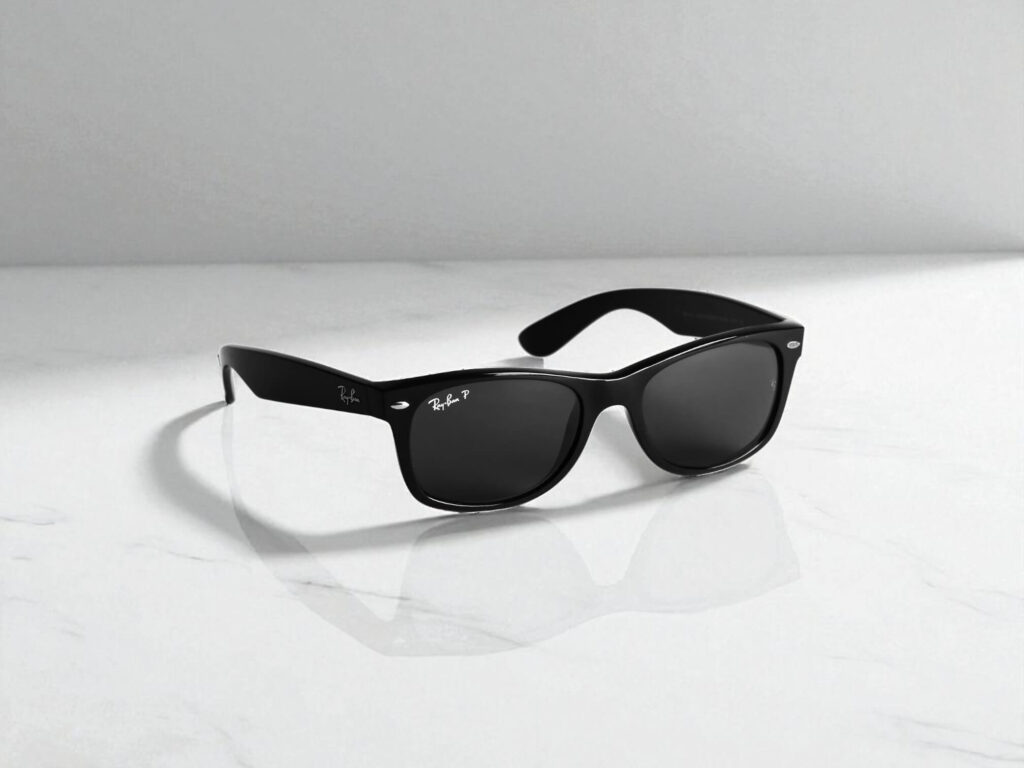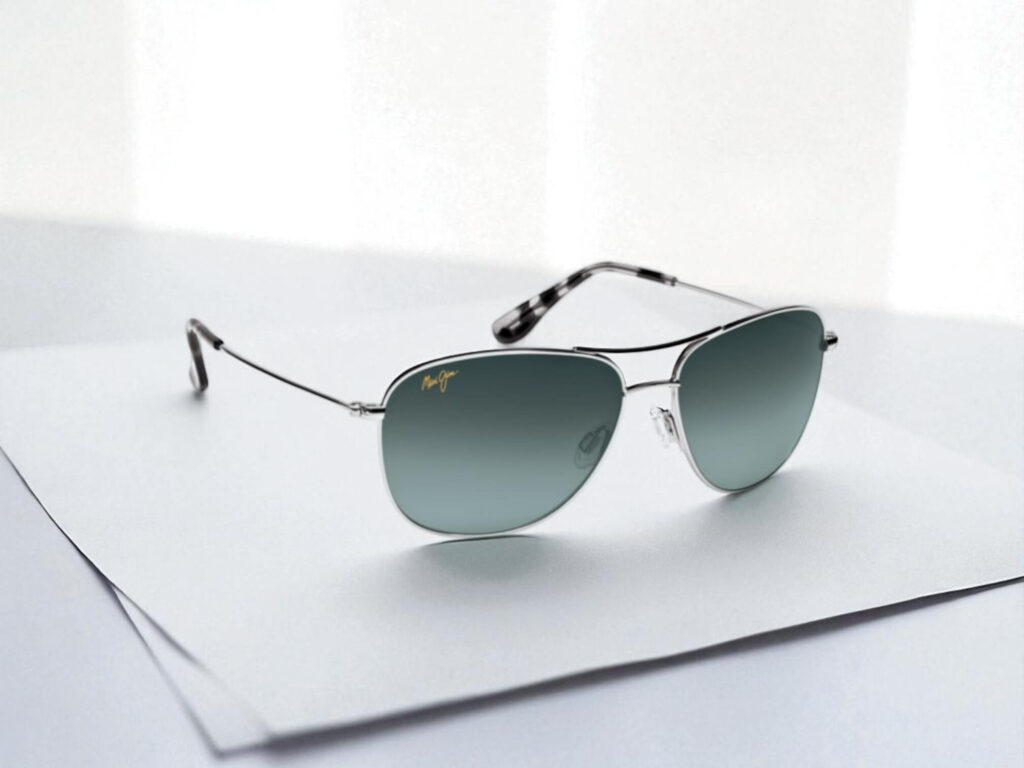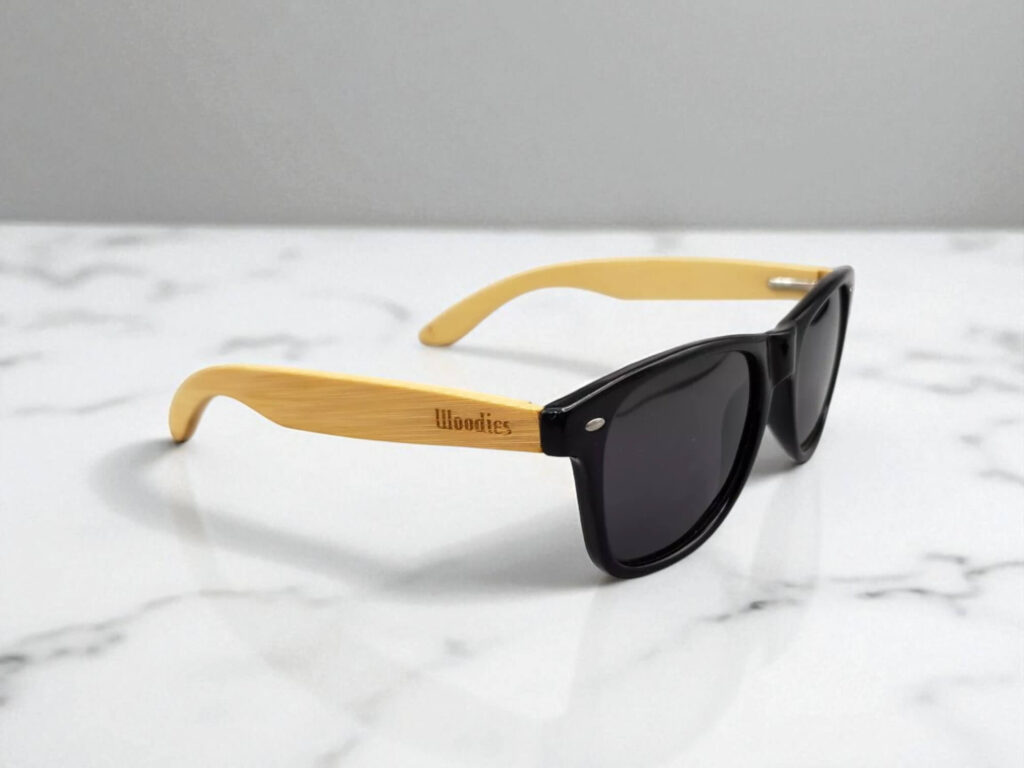Sunglasses Frame Materials: Which One Fits You Best?
Your sunglasses frame material affects more than just looks—it impacts comfort, durability, and even your wallet. Walk into any sunglass store, and you’ll face dozens of options made from different materials. Some feel flimsy after a month, while others last for years.
The material of your sunglasses frames determines how they feel on your face, how long they’ll survive your lifestyle, and whether they’ll cause skin irritation. After helping hundreds of customers choose the right frames, I’ve learned that most people focus on style first and regret it later when their expensive shades break or become uncomfortable.
This guide breaks down every major type of sunglasses frame material, so you can make an informed choice. No more guessing whether those Ray-Ban Wayfarers in acetate will work for your morning runs or if titanium frames justify the extra cost.
Contents
- Why Your Sunglasses Frame Material Matters
- Common Materials Used for Sunglasses Frames
- Specialty Materials Used for Sunglasses Frames
- Choosing the Right Sunglasses Frame Material for Your Lifestyle
- Common Sunglasses Frame Material Mistakes to Avoid
- Care Tips for Different Frame Materials
- Making Your Final Decision
Why Your Sunglasses Frame Material Matters
Most people think all frame materials are the same. They’re wrong. The material affects four critical factors that determine your satisfaction with any pair of sunglasses.
Weight and comfort make the biggest daily difference. Heavy frames slide down your nose and create pressure points behind your ears. After wearing metal frames for eight hours at the office, you’ll understand why weight matters.
Durability varies dramatically between materials. Polycarbonate frames can survive being stepped on, while some acetate frames crack if you sit on them wrong. Your lifestyle determines which level of durability you actually need.
Skin compatibility becomes crucial if you have sensitive skin or allergies. Certain metals cause rashes or irritation that makes wearing sunglasses miserable. This isn’t rare—about 10-15% of people have some level of metal sensitivity.
Climate resistance affects how your frames perform in different conditions. Some materials become brittle in cold weather, while others warp in extreme heat. Living in Florida versus Minnesota should influence your material choice.
Common Materials Used for Sunglasses Frames
Plastic Sunglasses Frames
Plastic sunglasses frames dominate the market for good reason. They offer the best combination of comfort, style options, and reasonable pricing for most people.

1. Acetate Frames
Acetate frames represent the gold standard in plastic sunglasses. This plant-based plastic, made from cotton and wood pulp, offers incredible versatility. You’ll find acetate in everything from vintage-inspired wayfarers to modern oversized designs.
The biggest advantage of acetate is color variety. Manufacturers can create tortoiseshell patterns, marble effects, and bold solid colors that look rich and sophisticated. These frames adjust easily when heated, making them perfect for achieving a custom fit. Your optician can modify the temple curve or nose bridge without risking cracks or breaks.
Acetate works well for people with sensitive skin since it’s naturally hypoallergenic. The material feels smooth against your skin and doesn’t cause the irritation some metals do. However, acetate can become brittle over time, especially if exposed to extreme temperatures or harsh cleaning products.
Product Suggestion: Classic acetate frames from established brands like Ray-Ban Wayfarer or Persol offer excellent build quality and timeless style.
2. Polycarbonate Frames
When durability matters most, polycarbonate frames deliver. This impact-resistant plastic handles drops, bumps, and active lifestyles without breaking. Parents buying sunglasses for kids often choose polycarbonate because it survives playground accidents.
The lightweight nature of polycarbonate makes these frames comfortable for all-day wear. They’re also budget-friendly, making them accessible for people who want reliable sun protection without premium pricing. Many sports sunglasses use polycarbonate frames because they stay secure during movement.
The downside is style limitations. Polycarbonate doesn’t offer the same color and pattern variety as acetate. The material can also feel less premium, though the practical benefits often outweigh aesthetic concerns for active users.
3. TR90 Frames
TR90 represents modern plastic engineering. This Swiss-developed material has memory properties – you can bend and twist it, and it returns to its original shape. This flexibility makes TR90 frames nearly unbreakable under normal use.
The lightweight feel of TR90 impresses most wearers. These frames often weigh less than metal alternatives while providing excellent durability. The material also resists chemicals and temperature changes, making it ideal for outdoor activities or industrial environments.
TR90 costs more than basic plastic but less than premium metals. The investment pays off for people who are hard on their sunglasses or want frames that maintain their shape over time.
The main trade-off is limited color options and a somewhat industrial appearance. TR90 frames tend to look more technical than fashionable.
Recommended: The ZENOTTIC Polarized Sunglasses offer excellent value with unbreakable flexibility and comfortable all-day wear for active users.
Metal Sunglasses Frames
Metal sunglasses frames offer unmatched sophistication and longevity when chosen correctly. The key lies in understanding which metals work best for your specific needs and skin sensitivity.

1. Titanium Frames
Titanium represents the ultimate in sunglasses frame materials for people who prioritize comfort and durability. This aerospace-grade metal is incredibly strong while remaining lighter than most plastics.
Pure titanium frames are completely hypoallergenic, making them perfect for people with metal sensitivities. The material also resists corrosion better than any other metal option, ensuring your investment lasts for decades.
The premium pricing reflects titanium’s advanced properties. Quality titanium sunglasses frames start around $200 and can exceed $400 for designer options. However, the longevity and comfort often justify the investment for serious eyewear users.
Recommended: The Maui Jim Cliff House features premium titanium construction with their renowned lens technology, perfect for professional and casual settings.
2. Stainless Steel Frames
Stainless steel frames project professional sophistication. The thin profiles possible with steel create sleek, minimalist designs that work well in business settings. The material resists corrosion and maintains its appearance even with regular use.
Steel frames manage temperature fluctuations better than plastic options. They won’t warp in hot cars or become brittle in cold weather, although they may feel cold to the touch initially, which some people find uncomfortable.
Some people experience allergic reactions to certain steel alloys, particularly those containing nickel. If you have sensitive skin, look for surgical-grade stainless steel options.
3. Aluminum Frames
Aluminum frames offer a middle ground between steel and titanium. They weigh less than steel but cost less than titanium, making them attractive for style-conscious buyers on moderate budgets. The material allows for modern, technical-looking designs that appeal to younger consumers.
Aluminum dissipates heat well, preventing frames from becoming uncomfortably warm in direct sunlight. The material also resists corrosion, though not as effectively as titanium or high-grade steel.
However, aluminum can dent under impact, and the softer metal limits adjustment options. These frames work best for careful users who prioritize style and comfort over maximum durability.
Specialty Materials Used for Sunglasses Frames
Beyond traditional plastic and metal options, several specialty materials offer unique benefits for specific preferences and lifestyles.

1. Wood Frames
Wood sunglasses frames appeal to environmentally conscious consumers who want something truly distinctive. Materials like bamboo, walnut, and zebrawood create unique grain patterns that make each pair one-of-a-kind.
Woodiess and Proof Eyewear lead the wooden eyewear market with high-quality craftsmanship. Bamboo frames are particularly popular because bamboo grows quickly and requires minimal processing, making them more sustainable than traditional materials.
Wood frames are naturally lightweight and surprisingly comfortable. Some woods also offer natural UV resistance, though this varies by species. The organic feel and temperature stability make wood comfortable in various climates.
However, wood requires special care. Water exposure can cause warping or cracking, and the material needs occasional conditioning with natural oils. Most wooden frames can’t be adjusted like plastic or metal options, so proper fit is crucial from the start.
2. Carbon Fiber
Carbon fiber represents the cutting edge of sunglasses frame materials. This woven carbon strand material offers an exceptional strength-to-weight ratio that appeals to performance-oriented users.
The material’s rigidity provides excellent stability during high-impact activities, while its feather-light weight reduces fatigue during extended wear. Carbon fiber also maintains its properties across extreme temperatures, making it ideal for varied outdoor conditions. Oakley incorporates carbon fiber elements in some of their premium sport models.
Carbon fiber’s main limitations include premium pricing and repair difficulties. Damaged carbon fiber usually requires complete replacement rather than simple fixes. The material also offers limited style variety compared to traditional options.
3. Buffalo Horn
Buffalo horn frames represent the pinnacle of luxury eyewear materials. Each piece displays unique coloration and patterns that can’t be replicated artificially.
Horn is naturally hypoallergenic and comfortable at skin temperature, making it ideal for people with sensitivities to other materials. The material ages beautifully, developing character over time rather than showing wear.
The ethical sourcing and premium craftsmanship reflected in horn frames justify prices that often exceed $300-600. However, research the brand’s sourcing practices to ensure ethical treatment of animals.
Choosing the Right Sunglasses Frame Material for Your Lifestyle
Your daily activities should drive your sunglasses frame material choice more than fashion trends or pricing alone.
For Active Lifestyles: Polycarbonate or TR90 provides the durability needed for sports and outdoor activities. These materials handle impacts and maintain their shape through temperature changes and physical stress.
For Professional Settings: Stainless steel or premium acetate frames project the right image in business environments. The sleek profiles and sophisticated finishes complement professional attire.
For Sensitive Skin: Acetate and titanium avoid the allergic reactions that some metals cause. These options feel comfortable against skin and won’t irritate during extended wear.
For Budget-Conscious Buyers: Polycarbonate and aluminum offer excellent value for money. You get durability and UV protection without premium pricing. Basic acetate frames also provide good value if you prioritize style variety.
Common Sunglasses Frame Material Mistakes to Avoid
Don’t assume all plastic frames are cheap or all metal frames are expensive. High-end acetate often costs more than basic stainless steel, while premium titanium commands prices higher than luxury acetate.
Avoid choosing materials based solely on appearance. That beautiful wooden frame might not handle your active lifestyle, while those technical-looking carbon fiber frames might be overkill for casual wear.
Consider your climate when selecting materials. Metal frames can feel uncomfortably cold in winter, while some plastics may warp in extreme heat. Choose materials that work in your environment.
Care Tips for Different Frame Materials
Plastic Frames: Clean with mild soap and water, avoiding harsh chemicals that can cloud or crack the material. Store in protective cases and avoid leaving them in hot cars.
Metal Frames: Use microfiber cloths for regular cleaning and check screws periodically. Metal frames can handle more aggressive cleaning but should still be stored carefully.
Specialty Materials: Wood frames need special cleaners and should never be soaked in water. Carbon fiber requires gentle handling to avoid scratches that can weaken the material.
Making Your Final Decision
The best sunglasses frame material balances your priorities between comfort, durability, appearance, and budget. Most people find success with quality acetate for daily wear or polycarbonate for active use. Consider your primary use case first, then factor in skin sensitivity and budget constraints.
Quality matters more than material type in many cases. A well-made polycarbonate frame often outperforms a cheap metal frame. Focus on reputable brands that use high-grade materials and solid construction techniques.
Your sunglasses represent a daily investment in comfort and eye protection. Choosing the right frame material ensures that investment pays dividends through years of reliable use.